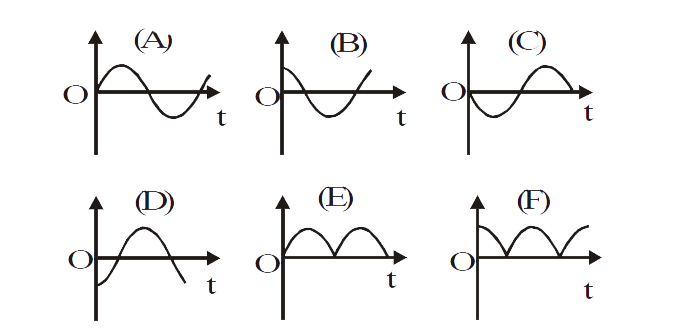The displacement of a particle in S.H.M. is given by x=sinωt+√3cosωtm. Then at t = 0 its displacement in metres is
A
0.5
B
√3
C
1
D
1/√2
Video Solution
Text Solution
The correct Answer is:B
x=sinωt+√3cosωt
=sinω×0+√3cosωt×0
=sin(0)+√3×cos(0)=0+√3×1
=√3
|
Topper's Solved these Questions
Similar Questions
Knowledge Check
The displacement of a particle in SHM is given by x=sinωt+cosωt. Then its amplitude and initial displacement are
A1,√2 unitsB√2,1 unitsC√2,√2 unitsD1, 1 unitsThe displacement of a particle in S.H.M. in one time period is
AAB2AC4ADZeroThe displacement of a particle performing S.H.M. is given by x=10sin(ωt+α) metre. If the displacement of the particle is 5m, then the phase of S.H.M. is
Aπ3 radianBπ6 radianCπ4 radianDπ2 radian
The displacement of a particle performing a S.H.M. is given by x=12cos(ωt+α)cm. If at time t, the displacement of the particle is 6 cm, them the phase of the particle at that instant is
View SolutionThe displacement of a particle executing a S.H.M. is given by x= A "sin" ωt+Acosωt. What is the amplitude of motion ?
View SolutionThe displacement of a particle making S.H.M. is given by x=6cos(100t+π4)m then the frequency is
View SolutionThe displacement of a particle executing S.H.M is given by x=0.01sin100π(t+0.05). The time period is
View SolutionThe displacement of a particle in S.H.M. is given by x=Bsin(ωt+α). The initial position (at time t=0), of the particle is the initial phase angle if the angular frequency of the particle is πrad/s ?
View Solution

